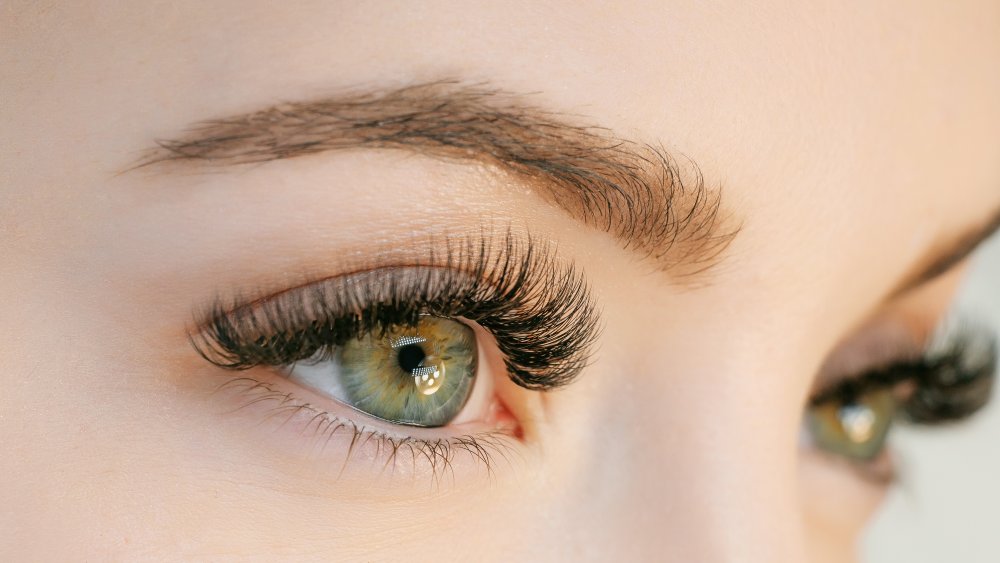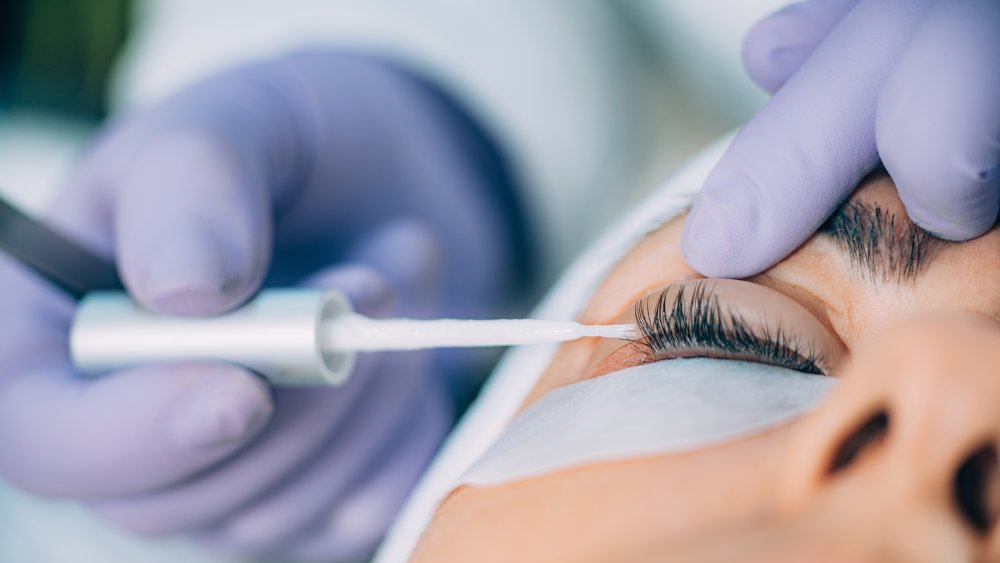The Real Difference Between Brow Lamination And Lash Lifts
In the last few years, brow lamination and lash lifts have become mainstream. If you're getting your brows done, you're likely getting your lashes done, too, and vice versa. But what exactly is the difference between the two — beyond the treatments being carried out on different facial features, of course?
Basically, both treatments help you achieve your dream brow or lash shape while making them appear fuller. "Brow lamination is a process of restructuring the brow hairs to keep them in a desired shape," Natalie Piper, an international trainer at the Eyelash Design Company, explained to Vogue. "It's the perfect treatment for anyone whose hairs are irregular in direction, who has any gaps in between said hairs, or who wants that groomed, brushed-up look," she continued.
Lash lifts are similar, except that they temporarily shape lashes. "A lift is essentially what your lash would be doing with a really good mechanical curler, so [giving] a nice shape upward and a realistic curl," Courtney Buhler, founder of Sugarlash PRO, told Elle.
Brow lamination and lash lifts differ in price
Brow lamination treatments cost between $75 and $100, and involve a three-step chemical process (via Shape). Step one "breaks down the bonds in each of the brow hairs, allowing them to form or freely move into a new shape or style," brow artist Melanie Marris explained to FabFitFun. The brows are then brushed into the desired shape and "when step two is applied, those bonds are set and now reformed into their new shape," she continued, adding that step three is usually just a coating of keratin to strengthen the hairs, ensuring they don't break off.
Lash lifts, on the other hand, cost between $125 and $175, and rely heavily on the curling rod to achieve the desired shape (via Shape). As Kara Gutierrez, owner of Spot On Beauty, explained to Today, "You glue a curved plastic rod onto the eyelid, and then glue the lashes around the rod." Then like brow lamination treatment, a chemical process is used. The service is mostly considered safe, but keep in mind the technician is working right by your eyes. "It's crucial to keep your eyes closed during the process and not let the formula get in contact with the eye itself as that could cause a reaction if you open your eyes," Gutierrez warns.

